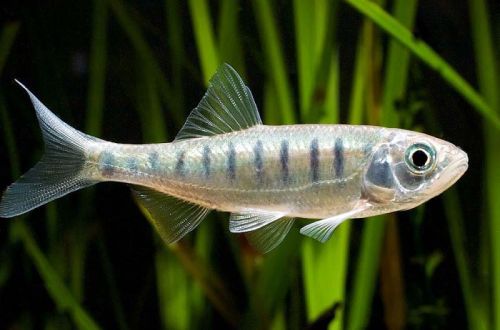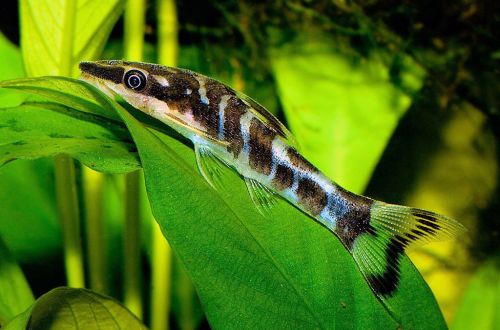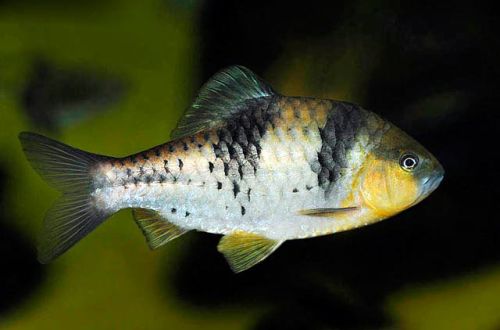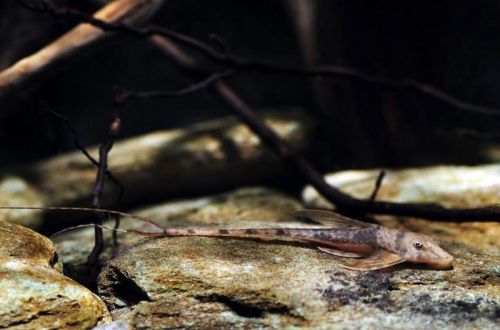
Barna’s fish
Barna’s fish, scientific name Opsarius barna, belongs to the family Cyprinidae (Cyprinidae). The name is a Russian-language transcription of the Bengali word that the locals call this species.

Contents
Habitat
It comes from South Asia from the territory of India. Inhabits the vast basins of the Ganges and Brahmaputra rivers. According to some reports, it also occurs in the river systems of Nepal, Bhutan, and Bangladesh.
A typical biotope is the main channel of a river with moderate or rapid flow, with substrata of stones and boulders.
Description
Adult individuals reach a length of up to 15 cm in nature, but in cramped conditions of aquariums they grow no more than 11–13 cm. The color is gray, silvery in juveniles. The body pattern consists of rows of short black vertical strokes. Fins and tail are translucent.
Brief information:
- The volume of the aquarium – from 250 liters.
- Temperature – 16-24°C
- Value pH — 6.0–8.0
- Water hardness – 3–15 dGH
- Substrate type — stony
- Lighting – bright, moderate
- Brackish water – no
- Water movement – moderate or strong
- The size of the fish is 11–13 cm.
- Food – any food
- Temperament – peaceful
- Content alone, in pairs or in a group
Maintenance and care, arrangement of the aquarium
The optimal size of the aquarium for a group of 6-8 individuals starts from 250-300 liters. When keeping, it is recommended to ensure a moderate movement of water, for example, due to a separate pump or a productive filtration system.
The design uses heaps of stones, driftwood and other decorative elements, securely fixed in the substrate. Given the presence of a current and the lack of suitable soil, planting most plants is unacceptable. It is recommended to place species that can grow on the available surface (stones, driftwood), these include mosses and ferns, as well as unpretentious anubias.
It is important to provide clean, oxygen-rich water, which is achieved not only by the smooth operation of the filter, but also by regular maintenance of the aquarium. At a minimum, it is necessary to replace part of the water with fresh water weekly and remove accumulated organic waste.
Able to successfully adapt to a wide range of hydrochemical parameters. Prefer not too high temperatures. As a rule, they feel comfortable in an unheated home aquarium.
Food
An omnivorous species, they accept most popular dry, frozen and live foods. They feed mainly in the upper layer of water.
Behavior and Compatibility
Although the Barn fish are peaceful, but given the specifics of the habitat, the number of possible neighbors is limited to some types of charrs, plecostomus catfish and hardy cyprinids.





